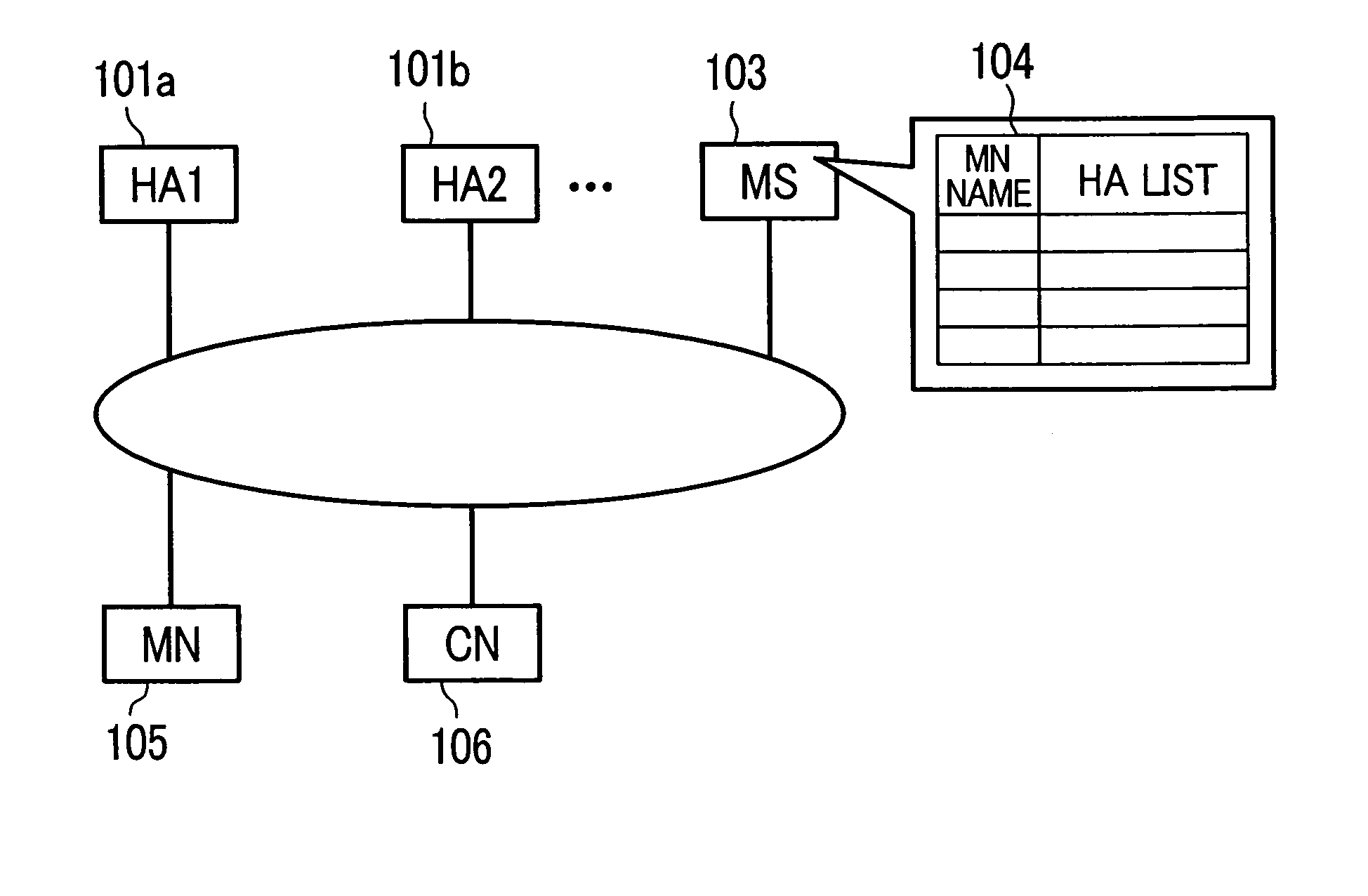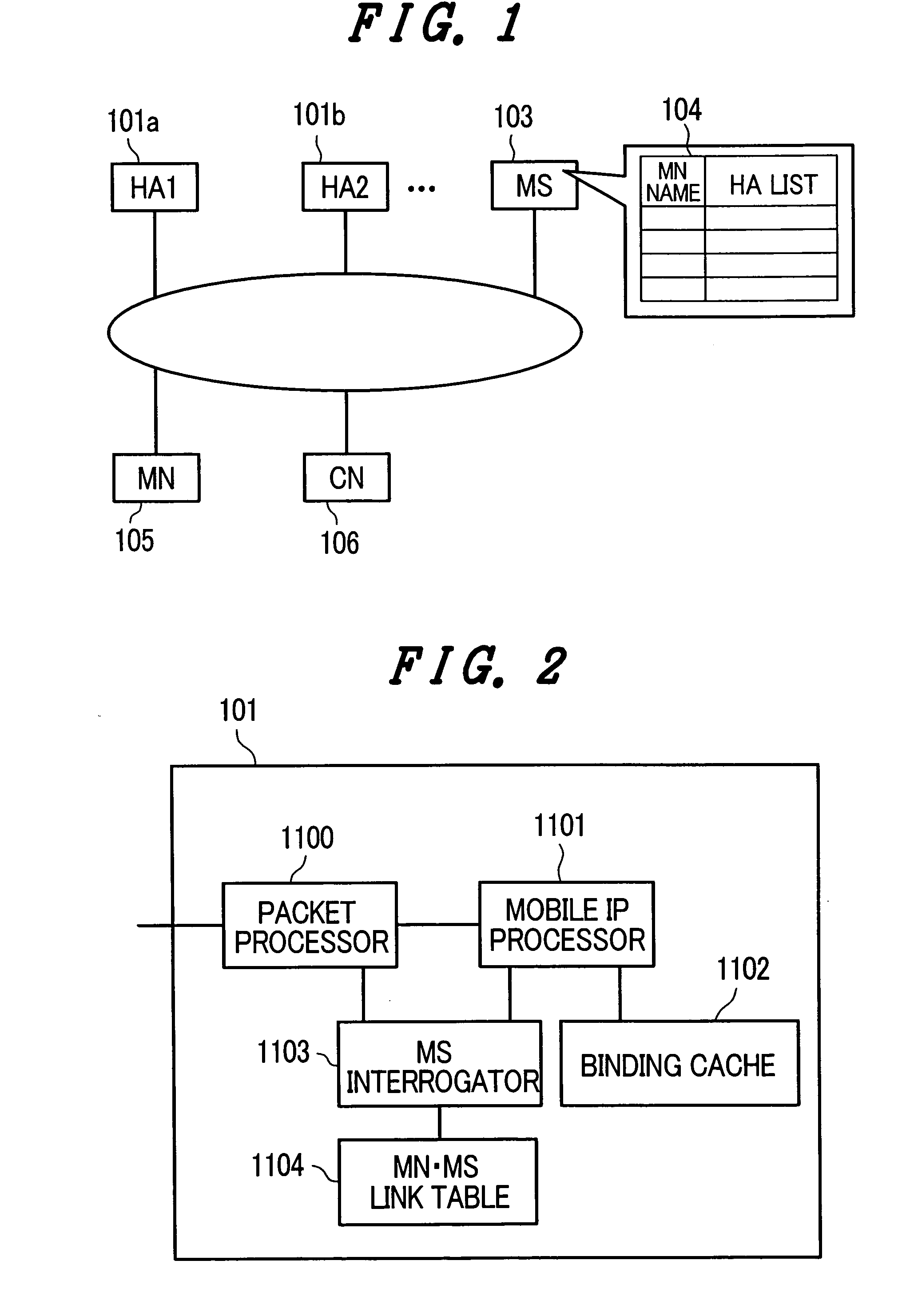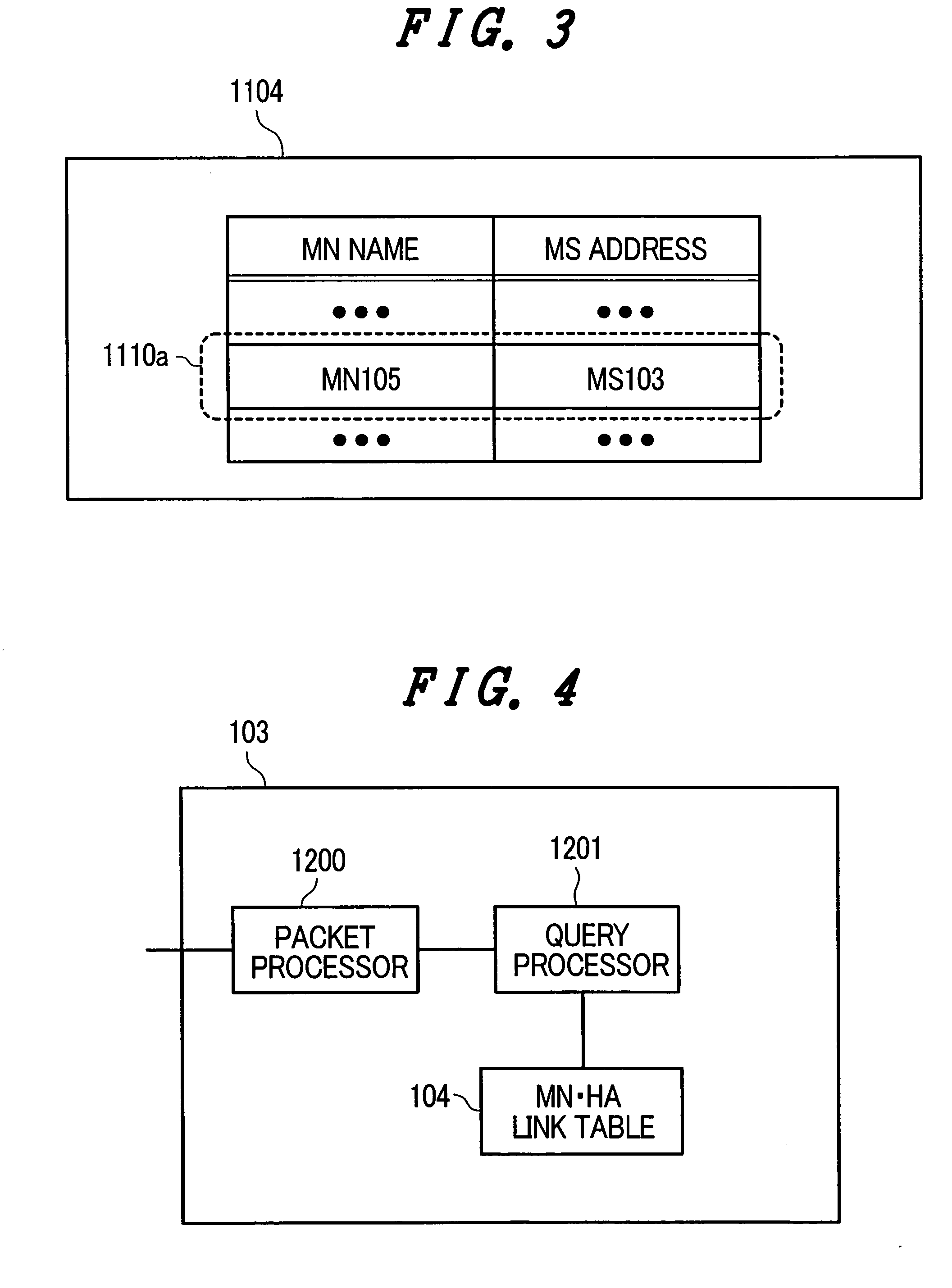Method and apparatus for mobile network
a mobile network and mobile network technology, applied in the field of mobile network methods and devices, can solve the problems of long communication paths, inability to use routing optimization functions, and technology does not contain a method allowing cn that do not support mobile ipv6, so as to shorten the communication path and reduce network traffi
- Summary
- Abstract
- Description
- Claims
- Application Information
AI Technical Summary
Benefits of technology
Problems solved by technology
Method used
Image
Examples
first embodiment
[0036] The embodiment of the present invention is described next with reference to the accompanying drawings.
[0037]FIG. 1 shows the structure of the system of the present embodiment. This system is comprised of a Mobile IPv6 compatible node (MN) 105, a home agent (HA) group 101a, 101b for managing the linking of the MN home address (HoA) and the care-of address (CoA) of the MN, a master server (MS) 103 for managing the HA group, and a node (CN) 106 for communicating with the MN. The MS contains a binding list (or MN-HA link table) 104 made up of an HA group holding the MN and the care-of address for that MN. Only two HA, here 101a and 101b are shown on the map for purposes of simplicity. However the number of HA is not limited to two. Only one MS is shown here, however multiple MS may be utilized and for example an MS may be available for every MN.
[0038]FIG. 2 shows a typical structure of an HA. The HA101 contains a packet processor 1100 made of an interface with external sections...
second embodiment
[0068]FIG. 12 shows a block diagram of system not utilizing a master server.
[0069] This system is made up of one or more home agents (HA) 101a, 102b, 102c groups, and a mobile (MN) node 105, and one or more communication party nodes (CN) 106. Each HA includes a list (related HA list) for retaining the addresses of the other HA.
[0070] The operation for communicating from the CN to the MN is described while referring to FIG. 13.
[0071] The CN106 sends a packet 301 to the home address of the MN105. The packet 301 is relayed to HA102b which is the nearby HA by a router group not shown in the drawing. When the HA102b receives the packet 301, it searches the binding cache within its own node for the MN105 care-of address. If results of the search are that no care-of address was registered then a query (communication 902a, 902c) is made to the HA (for example 101a, 101c) registered in the HA link list 801, about whether the MN105 care-of address is registered or not. If there is an MN105...
PUM
 Login to View More
Login to View More Abstract
Description
Claims
Application Information
 Login to View More
Login to View More - R&D
- Intellectual Property
- Life Sciences
- Materials
- Tech Scout
- Unparalleled Data Quality
- Higher Quality Content
- 60% Fewer Hallucinations
Browse by: Latest US Patents, China's latest patents, Technical Efficacy Thesaurus, Application Domain, Technology Topic, Popular Technical Reports.
© 2025 PatSnap. All rights reserved.Legal|Privacy policy|Modern Slavery Act Transparency Statement|Sitemap|About US| Contact US: help@patsnap.com



